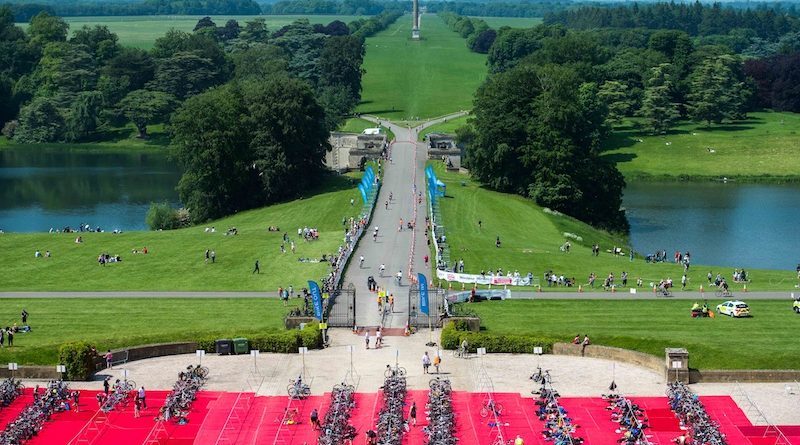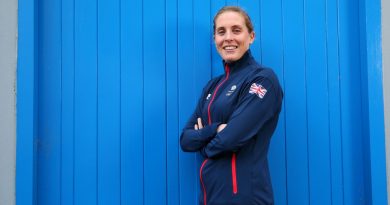Triathlon by Ballot – Racing against the odds
Triathlon claims to be an endurance sport that everyone can aspire to do and has been traditionally a great event for people from all walks of life, looking to take on a challenge. Trading on the phrase ‘the fastest growing sport in the world’ shows an increasing number of people have done just that.
But is this all about to change?
A new fad has hit town, that of ‘Triathlon by Ballot’. One of the latest Triathlon events to take the ballot route is the 2021 Blenheim Palace Triathlon. Widely regarded as UK’s most stunning triathlon, that combines a world class event experience, with beautiful scenery and a family day out, the event is set to take place over the weekend of 12 and 13 September 2021. Set in the beautiful private grounds of Blenheim Palace, this is one of the country’s most iconic races that attract many thousands of participants of all ages and abilities and this year is running an entry ballot to give as many people as possible the chance to take part. But is this the case?

According to the ballot’s terms and conditions “successful entrants will be drawn randomly from the ballot entries”. A selection process without ‘weighting’ means that newcomers to veteran age-groupers will be racing against the odds to win a place. One of Blenheim Triathlons claims to success has been its ability to shine the spotlight on first timers to the world of Triathlon. Their website claims during the 2019, event 1 in 3 participants were first timers. Now successful entrants will be drawn randomly from a vast array of ballot entries where does that leave those wishing to partake in the sport for the first time?. Will there be fewer or more?
There is no question that the Blenheim Palace Triathlon is a very popular event and demand for places vastly outstrips supply. It proudly boasts that it welcomes some 7,000 participants of all ages and abilities to swim, bike and run around the spectacular course. There appears to be no set limit to the number of places available for 2021, so for the following arbitrary hypothesis we will assume 7,000 places are to be made available to the general public, via the ballot. What are the odds of you winning a place? The sample chart below projects the probability of success based on probable submitted entries
| Year 2021 | Sample A | Sample B | Sample C |
| Ballot places | 7,000 | 7,000 | 7,000 |
| Probable Entries | 30,000 | 60,000 | 90,000 |
| Probability of success | 23.3.% | 11.6% | 7.7% |
If ‘Triathlon by Ballot’ is to became the new norm, due to the probability of low odds of entry success, there will be a large number of unlucky people who will be rejected multiple times over the years. Someone applying over the next three years could be given as little as a 7% change of entry within the period (dependant on the number of entries submitted). The way entry into any high-profile ‘Triathlon by Ballot’ event is allocated does link to many common themes within allocation systems. For example, the definition of ‘fair’ – a lottery gives all an equal chance, but does still leave those unlucky enough to be serial losers. Assuming the current probability of ‘winning’ stays constant, there remains a 20% chance someone could enter for 20 consecutive years, and still never have a chance to race.
There is no system of guarantee of entry after x number of rejections. This lesson was learnt in the London Marathon who offered entry after the sixth attempt until a simple binomial distribution in 2016, showed that 70% who failed to gain entry after five attempts would be eligible for automatic places for the 2021 race which meant that the race would be full if only a quarter of the 70% applied. Hence, that guaranteed scheme was scrapped.
To look on the bright side, if you are in the unlucky majority, remember that there are many more great triathlon events across the country and they’re all the same distance.
Critical Velocity Training
There is another important side to ‘Triathlon by Ballot’ that of inclusion. Part of British Triathlons Diversity and Inclusion Action Plan is “To improve the representation and brand image of Triathlon and ensure Inclusion is embedded throughout the sport.” in its bid to tackle racism and inequality that exists across sport in general. This raises the question on how a randomly generated selection process with the probability of low odds of entry success, consisting of predominately middle-class Caucasian applicants, is going to be more inclusive. We know there is no easy solution and change will require a consolidated approach but can we really say that ‘Triathlon by Ballot’ will create opportunities which are truly accessible and will “remove barriers to involvement” particularly for those of different ethnic-minority backgrounds to became more culturally and socially accepted into the Triathlon community?
You may aspire to do a Triathlon but if ‘Triathlon by Ballot’ becomes the norm you may find you are racing against the odds to win a place!





